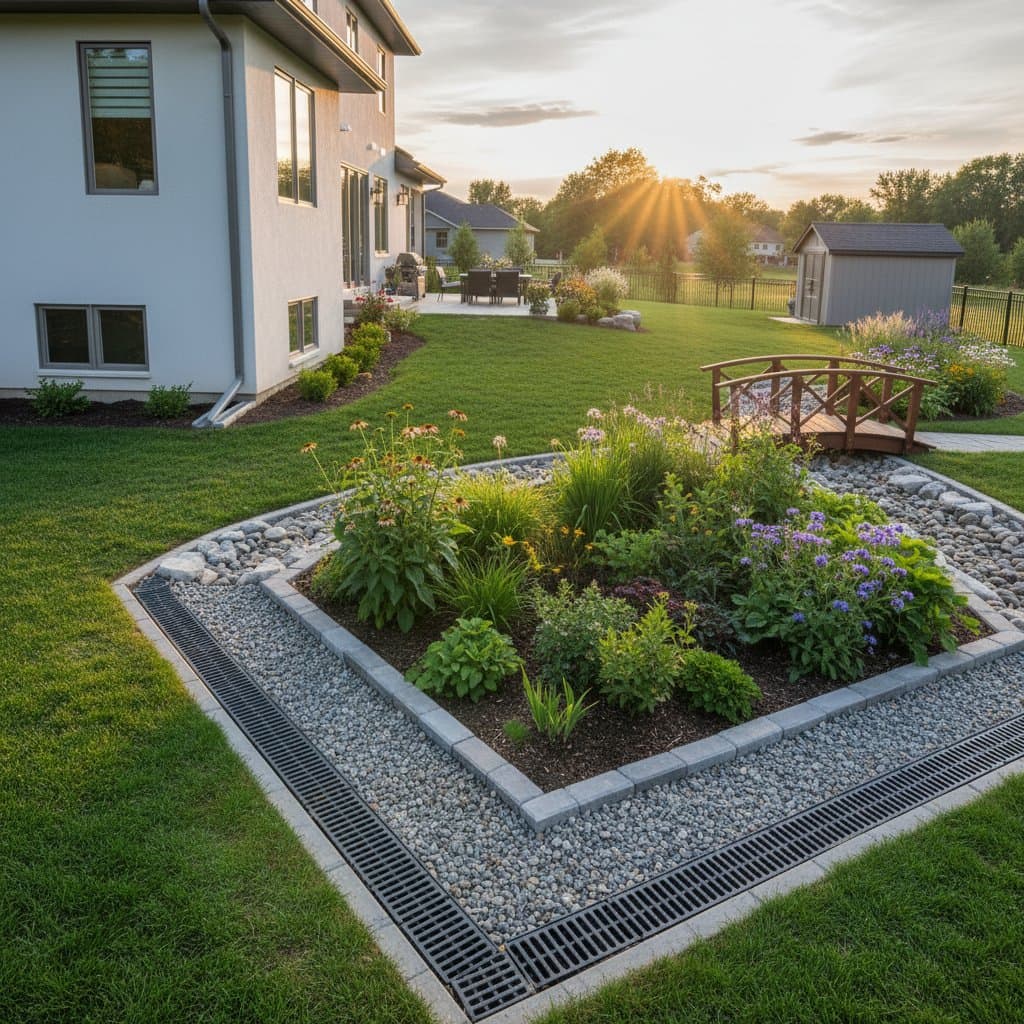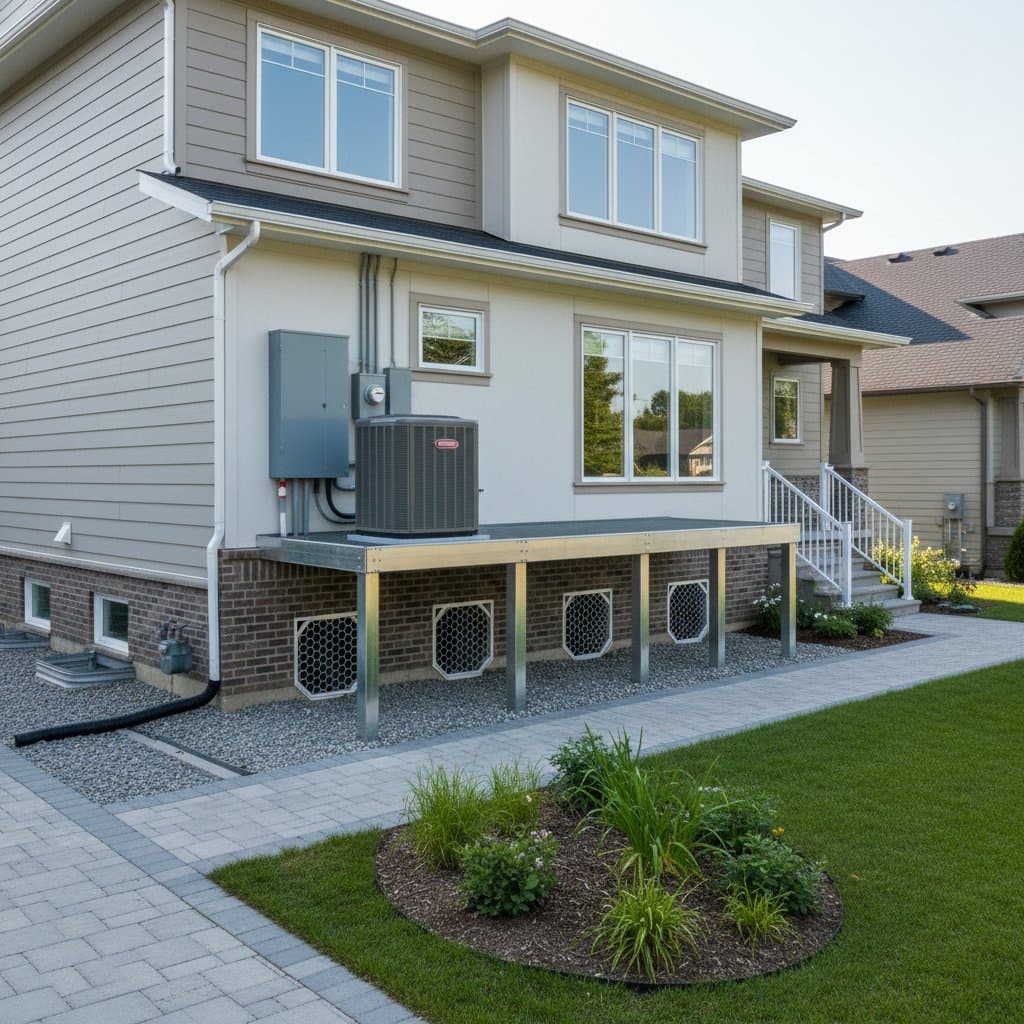Protect Your Home: 2025 Elevation Costs and Insurance
Rising water levels threaten homes in flood-prone regions. Homeowners in these areas often turn to elevation as a dependable strategy to mitigate risks and maintain reasonable insurance rates. This approach demands careful planning and significant investment, yet it safeguards property, supports resale value, and minimizes future expenses.
Quick answer: Plan for costs ranging from $80 to $250 per square foot when elevating a standard home. Factors such as the building's structure, foundation integrity, soil composition, and local flood zone regulations influence these figures. Completing the elevation frequently leads to substantial reductions in insurance premiums, which help recover a portion of the upfront expenses.
Comparing Elevation Methods
Various techniques suit specific home types and site conditions. The following table summarizes primary methods to guide your selection.
| Method | Best For | Pros | Cons |
|---|---|---|---|
| Pier and Beam Lift | Homes with crawl spaces or light wood framing | Reuses the existing foundation. Enhances ventilation and under-home access. | Restricts height gains to moderate levels. Unsuitable for zones demanding substantial elevation. |
| Slab Separation Lift | Homes built on concrete slabs | Preserves original walls by detaching the slab from footings. | Involves intricate procedures and higher expenses. Poses risks of structural strain. |
| Slab Elevation (slab and house together) | Modern homes on concrete slabs | Maintains slab-house unity for enhanced stability. | Demands powerful lifting gear and meticulous synchronization. |
| Stem Wall or Perimeter Wall Extension | Homes with masonry or concrete block construction | Builds a robust perimeter foundation to increase height. | Requires extensive labor. Often necessitates new stairs and extended utilities. |
| Fill and Rebuild Pad | Sites with sufficient yard space | Creates a fresh base elevated above flood levels. | Entails significant digging and site regrading. Could alter local drainage patterns. |
Decision helper:
Select pier and beam lifting for wood-framed structures needing modest height adjustments. Opt for slab elevation in concrete-slab homes where regulations specify notable lifts. Consider fill and rebuild when the current foundation shows irreparable damage.
Timeline and Order of Operations
Most home elevation projects span three to six months, influenced by project scope. Delays may arise from inclement weather, permitting processes, or contractor schedules.
Typical sequence:
- Conduct assessment and design phase with a structural engineer to evaluate feasibility.
- Secure permits and review insurance implications through local authorities and providers.
- Prepare the site, including utility disconnections and installation of lifting equipment.
- Execute the lift using hydraulic jacks or a coordinated jacking system for even pressure.
- Extend the foundation or construct a new one to support the raised structure.
- Reconnect utilities, install stairs, decks, and interior finishes.
- Undergo final inspections to obtain occupancy approval.
Tip: Time the project for drier seasons to avoid weather-related interruptions. Confirm that contractors hold specialized insurance for lifting operations and flood-related work.
Materials and Tools Checklist
Homeowners overseeing the project benefit from familiarity with essential materials to monitor quality and progress.
Common materials:
- Concrete blocks or poured concrete to extend foundations
- Steel beams to brace the house during the lifting phase
- Wood cribbing to form stable temporary support towers
- Rebar and anchor bolts for securing reinforcements
- Pressure-treated lumber for sill plates, stairs, and framing
- Waterproof sealants and flashing to protect foundation joints
- PVC or copper piping for rerouted utility lines
- Gravel and fill dirt to adjust site grading
Tools and equipment (handled by professionals):
- Hydraulic jack systems equipped with synchronized controls
- Laser levels and elevation markers for precise measurements
- Excavators or skid steers for earthmoving and grading tasks
- Concrete mixers and rebar cutters for foundation work
- Safety gear including harnesses, hard hats, and steel-toe boots
Knowledge of these elements fosters informed conversations with your team, ensuring accountability throughout the process.
Regional and Climate Considerations
Local geography shapes elevation strategies. Coastal zones typically mandate taller lifts and deeper pilings to counter storm surges, while inland areas might require only one to three feet above the base flood elevation.
Cold climates:
Incorporate insulated foundations to guard against pipe freezing and heat loss. Options like closed-cell spray foam or rigid insulation boards effectively insulate crawl spaces.
Hot and humid regions:
Emphasize under-home ventilation and vapor barriers to combat mold growth. Specify treated lumber paired with corrosion-resistant fasteners for durability.
Seismic zones:
Engage engineers versed in both flood and earthquake dynamics. Designs must accommodate vertical lifts alongside resistance to sideways forces.
Wind-prone regions:
Secure the elevated structure with hurricane straps and fortified connections to withstand uplift pressures.
Return on Investment
Elevation represents a major outlay, but it frequently enhances property worth in vulnerable communities. Prospective buyers favor raised homes for their insurability and reduced risk exposure.
ROI estimates:
- Insurance reductions may recoup 10 to 20 percent of costs through ongoing savings.
- In flood zones, property values often rise 5 to 15 percent post-elevation.
- Elevated homes sustain higher resale prices, even as adjacent properties suffer flood impacts.
Beyond financial gains, elevation delivers peace of mind by shielding belongings and easing storm-related anxieties.
Accessibility and Design Adjustments
Elevation alters access points, commonly requiring new stairs or ramps. Address these elements early to prevent costly modifications down the line.
Design tips:
- Install wide stairs with gentle slopes and reliable handrails for ease of use.
- Incorporate landings every 12 to 14 steps to enhance safety.
- Evaluate ramps or residential elevators for households with mobility needs.
- Position exterior lights to illuminate stairways and entry porches effectively.
Such considerations ensure the home remains functional and inviting for all occupants.
Sustainability and Longevity
Integrate elevation into a comprehensive sustainability framework. Retaining the original structure minimizes material use and landfill contributions compared to full rebuilds.
Practical sustainable choices:
- Source recycled steel and concrete aggregates to lower environmental impact.
- Install energy-efficient insulation and ventilation systems beneath the home.
- Use permeable grading materials to manage stormwater runoff and prevent erosion.
- Select low-VOC sealants and finishes to improve indoor air quality.
- Plan for solar-ready roofing or utility extensions to support renewable energy integration.
These steps extend the home's lifespan while aligning with eco-conscious practices. Regular maintenance, such as annual foundation checks and drainage clearing, preserves the investment for decades.
Securing Funding and Next Steps
Explore financing options to make elevation feasible. Federal programs like FEMA grants or flood mitigation assistance cover portions of costs for qualifying properties. Low-interest loans from HUD or state agencies provide additional support.
Consult a structural engineer first to obtain a detailed cost estimate and design plan. Gather multiple contractor bids, verifying licenses and references. With thorough preparation, elevation transforms flood vulnerability into resilient security, yielding long-term financial and emotional benefits.



